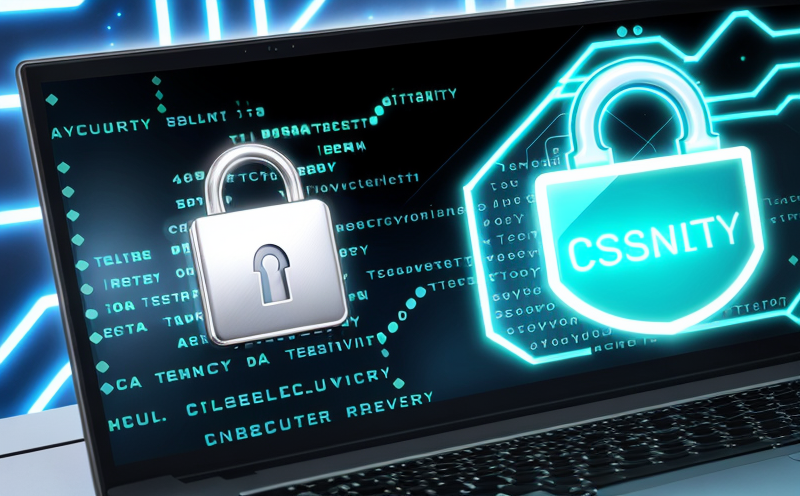ISO/IEC 27017 Cloud Security Assessment for IoT Platforms
The ISO/IEC 27017 Cloud Security Assessment is a critical component for ensuring the robust security of cloud-based IoT platforms. This standard provides guidelines and best practices to protect sensitive data, ensure compliance with legal requirements, and mitigate risks associated with cloud services in an increasingly connected world.
With the rise of smart home devices, wearable tech, and industrial Internet of Things (IoT) systems, cybersecurity is more than a buzzword; it's a necessity. The ISO/IEC standard 27017 offers a framework that helps organizations identify and mitigate vulnerabilities in their cloud environments. This service ensures that your IoT platform is secure, compliant, and ready to meet the evolving demands of the market.
The assessment covers various aspects including access control, data protection, system and communications security, operational security, and compliance management. It aims to provide a comprehensive evaluation of the security posture of an organization's cloud infrastructure. By adhering to this standard, organizations can demonstrate their commitment to safeguarding sensitive information and maintaining trust with stakeholders.
One of the key benefits of ISO/IEC 27017 is its focus on continuous improvement through regular assessments and audits. This ensures that your IoT platform remains secure as technologies evolve and threats become more sophisticated. The standard also emphasizes the importance of establishing a robust security culture within the organization, which involves training employees to recognize potential risks and take proactive measures.
The assessment process typically begins with an initial review of existing policies and procedures. Our team will then conduct interviews with key personnel to gain insights into current practices and challenges faced by your organization. Following this, we perform a technical evaluation using industry-standard tools and techniques to identify any weaknesses or gaps in your cloud security measures.
A detailed report is generated after the assessment, outlining findings and recommendations for improvement. This document serves as a roadmap for enhancing your IoT platform's security posture and ensuring ongoing compliance with relevant regulations such as GDPR (General Data Protection Regulation) and HIPAA (Health Insurance Portability and Accountability Act).
Our expertise lies in translating complex technical concepts into actionable strategies that align with business objectives. By leveraging our deep understanding of both cloud technology and cybersecurity principles, we help organizations navigate the complexities of securing their IoT platforms effectively.
In summary, implementing ISO/IEC 27017 ensures not only compliance but also enhances overall security posture by addressing potential threats head-on. It provides peace of mind knowing that your organization is taking proactive steps towards protecting valuable assets and maintaining customer trust.
Why It Matters
The importance of robust cybersecurity cannot be overstated, especially within the realm of IoT platforms. In today's interconnected world, where devices are constantly transmitting data over networks, ensuring that these communications remain secure is paramount. Cyber attacks targeting IoT systems can have severe consequences ranging from financial loss to reputational damage.
- Data Breaches: Unauthorized access to personal information stored in cloud environments poses significant risks for individuals and businesses alike.
- Financial Losses: Sensitive data breaches often lead to costly legal actions, fines, and remediation efforts.
- Reputation Damage: Trust between organizations and customers is easily eroded by security incidents, leading to long-term damage.
- Operational Downtime: Disruptions caused by cyberattacks can result in substantial downtime affecting both internal operations and external services.
By adhering to the ISO/IEC 27017 standard, organizations demonstrate their commitment to safeguarding sensitive information and maintaining trust with stakeholders. This not only protects against immediate threats but also sets a benchmark for future growth and innovation within the industry.
Customer Impact and Satisfaction
The implementation of ISO/IEC 27017 Cloud Security Assessment brings tangible benefits to customers across various sectors including healthcare, finance, manufacturing, and retail. Here’s how it impacts them:
- Better Data Protection: Customers can rest assured that their personal information is protected from unauthorized access.
- Enhanced Reputation: Demonstrating compliance with international standards boosts credibility among consumers and partners.
- Increased Trust: By showing proactive measures against cyber threats, organizations foster stronger relationships with stakeholders.
- Reduced Risks: Regular assessments help identify vulnerabilities early on, reducing the likelihood of costly breaches or disruptions.
Our approach ensures that customers receive comprehensive support throughout every stage of the process. From initial consultation to final implementation and beyond, we provide tailored solutions designed specifically for their unique needs and requirements.
Competitive Advantage and Market Impact
- Differentiation: Organizations that adopt ISO/IEC 27017 demonstrate leadership in cybersecurity, setting them apart from competitors who lag behind.
- Innovation: Compliance with international standards encourages continuous improvement and adaptation to new technologies.
- Customer Retention: By prioritizing security, companies can retain loyal customers who value safety above all else.
- New Markets: Demonstrating compliance opens doors to new markets where stringent regulatory requirements apply.
The competitive landscape is rapidly changing, and staying ahead requires more than just technical expertise; it demands a commitment to excellence in all aspects of business operations. ISO/IEC 27017 helps organizations achieve this by providing a structured approach to managing risks effectively while fostering innovation and growth.





